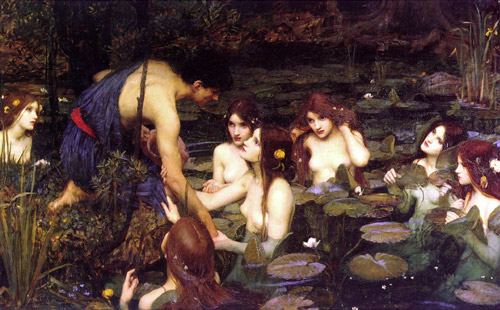
Or maybe I should say the marketing of art …
I’ve been doing a lot of drawing lately – gearing up for an amateur painting contest with some friends. And this is all on the lo-fi, and by that I mean on canvas, not photoshop.
Anyway, I’ve also been studying some of history’s great masters to get some ideas on style and technique and I came across J W Waterhouse’s Hylas and the Nymphs. And my first thought was … ‘Man, that’s good marketing’!
So let’s take a look at this great classic work of art (pictured above) and see what it can teach us about marketing …
- Sex Sells. Like it or not, it’s true. Personally I think it’s more correct to say “sexy” sells. Regardless, you can put a pretty smile on a bottle of rat poison and rats or no rats, sell truckloads of the stuff. Nothing is more imperative than the biological imperative.
- Find the Ideal and Repeat it. Idealism was an art movement that basically took the best parts of Realism and threw out the rest … look at all the nymphs … they could be twins, triplets, er … well you get the point. They’re all the same. They’re all Waterhouse’s ideal version of a beautiful woman. And repetition is what you use to promote your ideal.
- It’s All About Lifestyle. Location is a big part of this. So is portraying leisure and fun. What could be more refreshing on a hot summer day than a cool, clear freshwater swimming hole. Think about the lifestyle you want to associate with your product or service and transport your customers there with your marketing.
- The Real Story is Just Beginning. The end-note of your marketing is just the beginning of your customer getting on board. And it’s always good to leave your audience wanting more. As a marketer, it’s your job to lead people to the idea of what that “more” is, and then let them get involved and write the next chapter themselves. In the painting, you can see that Hylas is being dragged into the pond by the beautiful nymphs. And that’s where the painting ends.
But that’s not the end of the story.
Not if rule number one has anything to say about it.
